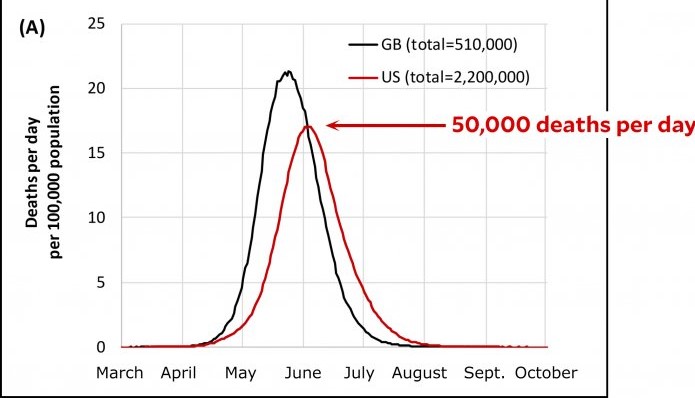Scientists of the world have finally figured out how long will it take for the Coronavirus pandemic to simmer down and disappear.
And the news is grim.
Infectious disease experts of the world have announced that the virus will take around 18 months to two years to go away. And the lethal impact of COVID-19 won’t reduce until it has infected about 60% to 70% of the world’s population.
Each flu season will help Coronavirus in infecting more people

Earlier, it was predicted that an even more dangerous second wave of Coronavirus will be coming soon along with flu season. As people’s immune systems are attacked by the common flu virus, it will be so much easier for Coronavirus infections to spread at even faster and more lethal rate.
Even the best-case scenario will not be able to stop the deaths, according to Mike Osterholm, Director of Infectious Disease Research at the University of Minnesota.
“This thing’s not going to stop until it infects 60 to 70 percent of people. The idea that this is going to be done soon defies microbiology.”
What to expect from COVID-19? History has the answers

And if history teaches us any lesson, it is that COVID-19 is an absolutely new virus with a mechanism that is completely unique. And because of this reason, no one is immune to this virus.
Many people don’t show symptoms or fall mildly sick only because they’re getting weakly infected, said the scientists.
The estimated time for this pandemic to go away is set at 18-24 months, because that’s how long it takes for humans to develop herd immunity.
They also said that the Coronavirus will not die during the summer, because it is a pandemic which very different from the seasonal flu.
And it is more dangerous due to several reasons:
“Because of a longer incubation period, more asymptomatic spread, and a higher R0(spread rate) of 3.5, COVID-19 appears to spread more easily than flu. A higher R0 means more people will need to get infected and become immune before the pandemic can end.”
Every country must be ready for the worst-case scenario

They told the governments all over the world, that the authorities should stop guessing the date when the pandemic will end. Instead, the government officials should start preparing for a long-term worst-case scenario.
Scientists have predicted there are three scenarios by which Coronavirus will continue to haunt the human population:
Scenario 1: Slow trickle (Best scenario, least likely)
The first wave of COVID-19 ends, and then multiple smaller waves of the virus outbreak will keep coming through for the next two years. And it ends only after 2021.
Scenario 2: Rapid fire (Worst scenario, most likely)
Probably the most plausible scenario – the second wave of COVID-19 comes, which is even bigger and more devastating.
It happened for the SARS outbreak of 2003, and H1N1 Swine Flu pandemic of 2009 – where the second wave killed more people than the first wave.

After the second wave is over, many smaller waves will continue throughout 2021. This is very similar to the flu outbreak of 1918-19, as the scientists said.
Scenario 3: Slow burn (Moderate scenario, moderately likely)
The pandemic just keeps going on the killing spree, but the death count gradually reduces over the coming years.
Premature reopening will make things only worse
Scenario 2 is the most likely and most dangerous one, and the governments should prepare themselves to face this pandemic properly.
The scientists said it was baffling how the governments are so eager to lift restrictions and reopen everything despite the looming threat which hasn’t quite subsided yet.
“It’s an experiment that likely will cost lives, especially in places that do it without careful controls to try to figure out when to try to slow things down again.”
Plus, they said that this premature reopening of society will cause the second wave to be even bigger.
Featured Image Courtesy: CDC

